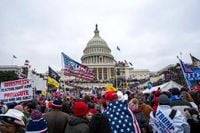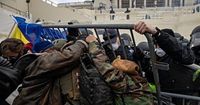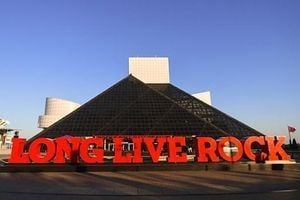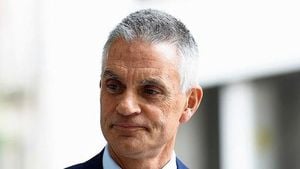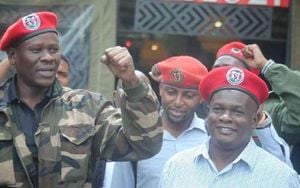The debate over the FBI’s role during the January 6, 2021, attack on the U.S. Capitol has erupted once again, fueled by a recent flurry of reports, conflicting interpretations, and heated public commentary. At the heart of the controversy is a number: 274. That’s the count of FBI agents cited in an internal report, which some media outlets and political figures have claimed were “plainclothes agents embedded in the crowd” that stormed the Capitol. The reality, as revealed by a close examination of primary documents and clarifications from multiple sources, is far more nuanced—and, perhaps, less sensational than some would have the public believe.
The latest round of speculation began on September 25, 2025, when The Blaze published an article titled, “FBI had 274 plainclothes agents embedded in Jan. 6 crowds, congressional source says.” The story quickly spread across social media, stoking suspicions about the FBI’s involvement and motives that day. But according to Lead Stories, the core claim is not supported by the actual internal documentation. The words “plainclothes” and “undercover” do not appear anywhere in the after-action report provided to the House Oversight Committee. Instead, the report lists 274 FBI agents who “responded” to the January 6 incident—including those addressing threats from pipe bombs and a suspicious vehicle, as well as those who entered the Capitol grounds and building after the breach had occurred.
Further muddying the waters, Just the News and The Post Millennial both published articles suggesting that the FBI had “embedded” plainclothes agents in the crowd. These reports cited the same after-action document but interpreted its findings through a more conspiratorial lens. The Post Millennial quoted statements from FBI personnel expressing frustration and disillusionment with agency leadership, with one agent writing, “We have been used as pawns in a political war, and FBI leadership fell into the trap and has allowed it to happen.” Another lamented, “Our response to the Capitol Riot reeks of political bias.” These candid remarks, while revealing internal discord, do not confirm the presence of undercover agents actively infiltrating the crowd before the violence began.
Congressional leaders, meanwhile, have seized on the revelations to demand further scrutiny. House Judiciary Committee Chairman Jim Jordan’s spokesman, Russell Dye, told Just the News, “Due to our oversight, Chairman Loudermilk’s leadership and Director Patel’s leadership, we continue to discover what exactly happened on Jan. 6.” Subcommittee chairman Barry Loudermilk echoed this sentiment, stating, “During the more than two years I have been investigating the events of January 6, I have seen evidence that suggests potential political bias within agencies that may have influenced their actions before, during, and after the events of January 6. But this report is more damning than anyone could have imagined and opens up even more questions.” He listed concerns about whether courts and prosecutors were aware of the number of FBI personnel present and whether any agents were called to testify during related prosecutions.
Yet, as Politico’s Kyle Cheney pointed out on September 26, 2025, these interpretations are “wildly misrepresented.” In a series of tweets, Cheney emphasized that the 274 agents were not undercover operatives embedded among the protesters but were instead part of the coordinated law enforcement response after the Capitol was breached. “In the doc itself: ‘responded to the Capitol,’ including group that responded to pipe bomb, explosives in van and team that helped clear inside the building,” Cheney wrote. He also noted that the so-called “bombshell” had already been reported by the Inspector General ten months earlier, underscoring that the FBI’s large on-scene presence was no secret to those following official investigations.
Adding to the confusion, some outlets and commentators have conflated the presence of these 274 agents with the use of confidential human sources (CHS) and informants targeting groups like the Proud Boys and Oath Keepers. According to the USA Herald, DOJ filings confirm that the FBI had 40 CHS tied to the Proud Boys and eight informants inside the group, as well as others embedded with the Oath Keepers. However, these sources were not part of the 274 agents referenced in the after-action report, nor were they documented as participating in the events at the Capitol on January 6.
Official statements from the Department of Justice and the FBI itself have repeatedly denied the presence of undercover agents in the protest crowds or at the Capitol on January 6, 2021. A December 2024 report from the DOJ’s Office of Inspector General concluded, “We found no evidence in the materials we reviewed or the testimony we received showing or suggesting that the FBI had undercover employees in the various protest crowds, or at the Capitol, on January 6.” The report further explained that FBI policy does not permit undercover employees to operate in crowds at First Amendment-protected events without explicit investigative authority, and that requests to conduct such operations on January 6 were denied.
Despite these denials, the controversy has reignited political and legal battles. The USA Herald reported that the FBI’s disclosure of 274 plainclothes agents “undercuts Wray’s sworn congressional testimony.” Former FBI Director Christopher Wray had told Congress in July 2023, “I’m not sure there were undercover agents on scene. As I sit here right now, I do not believe there were undercover agents on.” With Wray’s predecessor, James Comey, indicted for perjury on September 25, 2025, legal experts now speculate that Wray may face a grand jury probe over possible discrepancies in his testimony. The stakes are high, with perjury under 18 U.S.C. §1621 carrying the possibility of felony charges.
Critics from across the political spectrum have weighed in, each interpreting the revelations through their own lens. Liberal journalist Keith Olbermann, for example, mocked the right-wing framing, quipping that if Trump-appointed FBI directors sent agents into a crowd supporting Trump, “Trump just confessed to J6. Gotcha. Cool.” Others, like the agents quoted in the after-action report, worry that the FBI’s actions and subsequent disclosures have deepened perceptions of political bias within federal law enforcement.
One thing is clear: the narrative around January 6 and the FBI’s role remains fiercely contested. The facts—drawn from multiple official reports, congressional investigations, and first-hand accounts—show that while hundreds of FBI agents were present at the Capitol on January 6, there is no evidence they were undercover or embedded in the crowd before the violence erupted. Instead, they responded alongside other law enforcement agencies to restore order and investigate threats. The ongoing debate, however, reveals just how fraught and politicized the search for truth has become in the aftermath of one of America’s most consequential days.
As new committees, legal proceedings, and public inquiries continue, the country remains divided not just over what happened at the Capitol, but over how to interpret—and trust—the institutions tasked with protecting its democracy.
